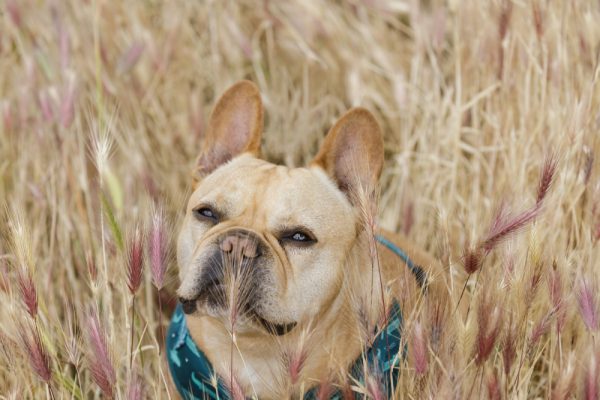In this article
View 8 More +The Istrian Hound comes in two varieties: the longhaired and the shorthaired. Originally from Croatia, this is a very old breed whose exact origins are unknown.
Breed Overview
Height:
18.5-19.5 inches
Weight:
35-40 pounds
Lifespan:
12-15 years
Colors:
White with orange or red patches
Suitable for:
Hunting families, those who do not live in an apartment
Temperament:
Independent, intelligent, energetic, loyal, calm
This dog has always been very popular as a hunting dog in his country of origin, but he has also proven himself as a family dog; indeed, he is a gentle, kind, sociable, and affectionate companion. Let’s dig into the specifics of this adorable canine.
Istrian Shorthaired Hound Characteristics

Istrian Shorthaired Hound Puppies

Getting a Istrian Shorthaired Hound from a breeder may be pricey depending on the lineage of the puppy, the pedigree of his parents, and the location of the breeder. Be sure to visit the breeding facilities before purchasing your puppy, and to ask all necessary questions of the breeder.
You can consider adoption, if the high price of a purebred puppy puts you off a bit. You may have to be okay with getting an older dog but they will be grateful for a loving home.
As a hunting dog, this pup will generally fair better with a hunting family. They are better suited for families living in a house with a decent sized yard or on a farm. They are very energetic so having enough room to run is a must.
Temperament & Intelligence of the Istrian Shorthaired Hound
A formidable hunter, the Istrian Shorthaired Hound is mainly used for hare and fox hunting, but also for chasing injured game. He is a passionate dog at work, and he does not fear harsh climates or rough terrain. He is full of energy when he is outside but is rather quiet and calm when he is inside.
The Istrian shorthaired hound is described as a gentle and docile dog. Calm, he is very attached to his owner. He is an excellent small game hunter, who adapts relatively well to family life. On the training side, it will be necessary to show firmness, but never brutality.
Are These Dogs Good for Families?
The Istrian Shorthaired Hound is a smart and trainable dog, but it is generally not recommended as a house pet. This breed was developed to hunt, and that is what it is best at. These dogs tend not to do well with children, and they have a high tendency to chase cats and other household pets, though early socialization and training may help to reduce these behaviors. As far as temperament goes, however, this hound is a calm and even-tempered breed. This dog is devoted to his owner and lively in the field.
Does This Breed Get Along with Other Pets?
The Istrian Dog is friendly and gets along well with other dogs but must be supervised in the presence of smaller animals because he will tend to chase them. Indeed, he has a strong hunting instinct, quite simply impossible to ignore. Therefore, even if you raise this puppy surrounded by small pets, like cats and rabbits, he will likely chase them after he reaches adulthood. However, every dog is different; nonetheless, ask yourself if you are willing to take that risk.

Things to Know When Owning an Istrian Shorthaired Hound:
Food & Diet Requirements
The Istrian Shorthaired Hound is not a picky eater, and he will do very well with commercial dog food. However, to keep him healthy, the kibbles must be of good quality, provide him with all the nutrients he needs, and be suitable for his age, size, and activity level.
It is recommended that you separate your daily rations into two meals, taken at set times, ideally in the morning and in the evening to establish a routine. He will then know that he is receiving food on a regular basis and does not feel the need to quickly swallow large amounts or spend his day begging.
In any case, if he’s asking for table scraps, it’s best to avoid giving in to his puppy eyes, unless of course, you make a careful and well-informed selection. On the other hand, some foods intended for humans can even be toxic to dogs, such as avocados and chocolate. For the same reasons, it is better to avoid giving him leftover meals.
An individual used for hunting is generally much more active in high season; therefore, it is necessary to adapt the quantity of food. However, it is just as important to increase his rations when he spends his days chasing game, as it is to reduce them to their usual level when he returns to a normal rhythm of life, to avoid any weight gain.
Exercise
When it comes to exercise, the Istrian Hound needs to run. You will therefore have to take long daily walks with him so that he spends his energy. Be sure to check your animal’s ears after outings in the forest or in the countryside to remove any parasites that may have lodged there.
In addition, the Istrian Shorthaired Hound is not really made to live in the city. It is not at all suitable for apartment living. It is a dog that tends to bark, so this annoying behavior could potentially cause neighborhood problems.
Training
The Istrian Shorthaired Hound is not too difficult to train, especially if firmness, consistency, diligence, and patience are emphasized. For the hunt, it will mainly be a question of waiting until the puppy is at least 8 months old and taking him to the field with other experienced dogs.
Tip: To train and educate this dog who can sometimes be stubborn, you will need:
- Attendance
- Perseverance
- Time
- Patience
- Understanding
These are the requisite qualities that are expected of an owner who loves his faithful friend and companion, regardless of his nature, determination, or stubbornness.
Grooming ✂️
The Istrian Shorthaired Hound sheds very little hair and only needs basic maintenance. It is recommended to brush this dog once or twice a week to keep it clean and to remove dead hair. You don’t need to bathe him often unless he comes back particularly dirty from a hunting trip! His coat, the inside of his ears, and his legs should be examined after each outing to detect any ticks or other unwanted parasites.
His teeth need to be brushed regularly to eliminate tartar build-up and the proliferation of bacteria. If they do not wear out naturally, his claws need to be cut. Also, if you are new to this, it is recommended that you seek advice from a veterinarian or professional groomer.
Health and Conditions
The breed is not prone to particular diseases. Indeed, he is a sturdy and solid dog and his average life expectancy is 13 years. However, he is not unlikely to be injured while hunting and come home with wounds, broken bones, or sprains. His floppy ears are also prone to ear infections.
- Ear infections
- Field Injuries
Male vs Female
There isn’t much of a difference between males and females. The male is slightly larger and taller than the female, but not by much: about an inch taller and a few pounds heavier.

3 Little-Known Facts About the Istrian Shorthaired Hound
1. This is a very old breed of dog.
The Istrian Shorthaired Hound is the oldest breed of hunting dog in the Balkans and, as is often the case with older breeds, its exact origins are difficult to trace. However, unlike its longhaired counterpart, the Shorthaired Istrian Hound was already featured in illustrations and paintings as early as the 15th century. Coming from old hunting breeds, he has always been prized for his qualities as a hunter but also, more recently, as a companion dog.
2. He loves you, but not as much as the hunt.
This hound is unlikely to deliberately disobey you when he is in the comfort of the house. On the other hand, hunting will always be his priority. If he picks up an interesting scent, chances are he will simply ignore your orders. Moreover, it is strongly recommended not to keep other small pets in your home, in order to avoid unfortunate accidents.
3. His original name is Istarski Kratkodlaki Gonič
This is the Istrian Shorthaired Hound’s name in Bosnian. In addition, this dog is generally not kept as a pet in its country of origin and in neighboring countries; they keep him only as a hunting dog.


Final Thoughts
The Istrian Shorthaired Hound is a popular companion for hunting-loving families. However, it is not made for city life, let alone to be left on its own in a small apartment. Although he gets very attached to his owner, he can sometimes be stubborn and his education requires a certain firmness. An experienced owner will know how to get the best out of this noble and devoted dog.
Related Read:
Featured Image Credit: f8grapher, Shutterstock


















